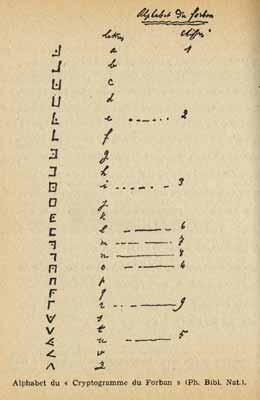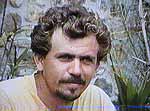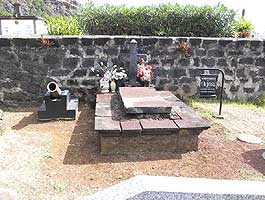Olivier Levasseur was born in Calais, France, circa 1688 to 1690. Alias name is Le Buseor La Bouche (eagle). The nickname was acquired because of its speed in the attackingenemy. We may think that pirates are those derived from the thugs, but not so withLevasseur. He was born of the bourgeoisie and located. He even had to get a good education and eventually became a member of the French naval forces.

Adventure begins when the Spanish war in 1716 Succession Benjamin Hornigold. As a result of the war she lived, Olivier brings a scar near his eye that made his views became more limited.
After a year doing various piracy, Hornigold divided societies. Olivier split up and tried his luck on the west coast of Africa. In 1719, he teamed up with the pirate Howell Davis and Thomas Cocklyn.
In 1720, they attacked the port of Ouidah in Benin coast and managed to destroy the fortresses there. In the same year he suffered shipwrecks in the red sea and stranded on the island of Anjouan, one of the Comoro islands. At that time, one eye is completely blind and she decided to wear an eye patch.
In 1721, he built his base on the island of Saint Mary's, near the coast of Madagascar.With John Taylor and Edward England, they managed to do some successful hijacking.The first result they are when they managed to hijack the ship Laccadives and managed to get the property valued at 75,000 pounds (about 10.35 million pounds today).
Then, their greatest success came when they managed to conquer the Portuguese vessel Nossa Senhora do Cabo (The Virgin of the Cape) is filled with treasures that belong to the bishop of Goa is also on board. Assets acquired include gold and silver bars, dozens of boxes full of golden guineas coins, diamonds, pearls, rubies, silks and religious objects from the cathedral of Saint Catarina in Goa, including the Flaming Cross of Goa made of pure gold. Total assets are estimated at 100 million pounds in 1968.
But Levasseur adventure ended when he was arrested and hanged on July 7, 1730 on the island of Bourbon. And this is where the legend of the lost treasure begins to develop.
Legend says that when he stood on the gallows with a piece of black cloth covering his eyes, he wore a necklace that contains 17 lines of messages confidential. He threw it into the crowd who witnessed it and shouted, "Find my treasure who could interpret it for you!"

years 1701-1714. Levasseur was assigned to fight in this war. When the war ended, he was called home by the French government. But he refused and instead joined with pirates
The story about the mysterious and treasure this necklace disappeared for severalcenturies from the public until 1923. At that time, a woman named Mrs.. Rose Savoy whowas walking down the street to find some engravings on rocks on the beach near BeauVallon Bel Ombre on the island of Mahe. During this carving is hidden from view due to high tide. However, due to the receding water conditions that year, the carving was beginning to look and show the shape of dogs, snakes, turtles, horses, flies, two hearts are united, akeyhole, the eyes, the box, the body of a woman and a man's head.

A notary who lives in Victoria who heard this news must have believed that the carving was made by the pirates. He then looked into the old archives and found two documents that may have relationships with these carvings. The first document is a map of the coast of Bel Ombre, published in 1735 in Lisbon. The map is written: "The owner of the land .. La Buse."La Buse is another name Levasseur.
The second document is the final testament of pirates Nageon Bernardin de L'Estang akaLe Butin (poet) who died 70 years after Levasseur who somehow managed to have theproperty Levasseur. In this testament cryptogram tetulis 3 rows and two letters.
One letter was addressed to his nephew:
"I lost a lot of documents during the sinking ship. I've managed to collect the number ofhidden treasures; But there are still four more left. You can find the keys and combinations and with other documents."
Then, another letter addressed to her brother reads:
"Our captain wounded. He tried to make sure that I was really a freemason. Onceconvinced, she entrusted to me the documents and secret to me. Promise me that theeldest child will find the treasure and fulfill my dream to rebuild our homes. Commander willsubmit documents them. the numbers there are three. "
This letter is the first time demonstrated a possible link between freemason associationwith treasure Levasseur.
Notaries were then contacted Mrs. Savoy and together they excavated in the rock were found Mrs.Savoy. Under a rock that has carved eyes, they found two coffins containing two skeletons and a skeleton without a coffin. Three framework is believed to be piratesbecause the gold rings that exist on the left ear respectively. But no treasure was found.

In 1947, an Englishman named Reginald Cruise Wilkins, Mrs.Savoy neighbors began to study the documents. He started from three cryptogram and two letters were found and discovered that the mysterious alphabet memiiki relations with masonic symbols.
Wilkins also found that the cryptogram has any connection with the Zodiac, the book clavicles of Solomon and the twelve tasks of Hercules. Clavicles book of Solomon is a book that comes from the medieval period reinassance containing mystical. While the twelve tasks of Hercules is the Greek myth about twelve tasks to be completed by Hercules.
In its long and tiring, Wilkins managed to solve most of the content of the cryptogram. He found clues that the property is located in a secret chamber in the soil. The room was protected by high tides that require dams to contain it and to be approached from the north. Access to it must be done via stone steps and a tunnel that led down the coast.
Wilikins do some digging on the island of Mahe. In a cave, he found some ancient pistols, some coins and pirate coffin. But He did not find the treasure. Each excavation was doing, always refer to the next clue. Regarding the relationship with freemasonry property also remains a mystery unsolved.
After searching for 27 years, Wilkins began to run out of funds. Investors who can not wait began refusing sponsoring it. Moreover, his health declined. But Wilkins believes that he is already very close to the location of the treasure. Unfortunately, on May 3, 1977 Wilkins passed away without breaking the last piece of the secret code. Today his son, John, who works as a teacher of history, to continue his efforts to find the treasure.
"Find my treasure, to you who can interpret it!" Levasseur and laughter echoing from the grave.

Olivier Levasseur graves currently located on the island of Reunion, a French territorylocated in the Indian Ocean, south of Madagascar.
source

No comments:
Post a Comment